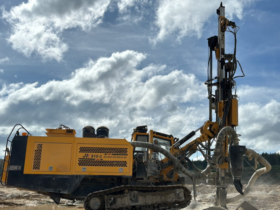The most common device designed to reduce the level of pressure in the pipeline is a direct pressure regulator. There are two varieties of such gearboxes. The first group supports the necessary level of pressure “to yourself”, and the second group “after itself”.
Structurally, a direct -acting pressure regulator is made in the form of a strong metal case, inside of which there is a valve, lids with an oil seal, a sensitive element in the form of a membrane and balancing cargo. As a rule, two valves are installed on the rod, the task of which is to balance the pressure of the working environment and the cargo mechanism.
The membrane and the pipeline are connected by a pulse pipe. Moreover, in the devices «after itself» switching is performed by the gearbox, and in the devices «to yourself» the pulse tube and the pipeline are connected to the gearbox. The interval between the gearbox and the switching place should exceed ten diameters of the pipeline.
Direct -acting pressure regulator works as follows. At the initial stage, the valve is open, and the working flow passes freely through the gearbox. With an increase in pressure, the output pressure begins to increase. Therefore, the pressure in the pulse tube begins to increase. The pressure affects the executive body and acts on the valve in the opposite direction. As a result, the valve closes, reducing the pressure of the medium at the output.
In the opposite case, when the output pressure decreases below the given level, reducing the effect on the sensitive element. The valve opens and increases the pressure of the working flow until its value reaches the required boundaries. To configure the gearbox, adjustment of the size of the cargo is used, as well as their placement at the rise.
The pressure gearbox «to yourself» has a similar algorithm. The difference lies in the initial position of the valves. When serving the working flow, the valves are in a buried state. When the pressure increases through the pulsed tube, the membrane begins to give signals to the executive organ that opens the valves. As a result, the pressure in the pipeline decreases. The same principle of cargo selection and their placement is used to configure the gearboxes “to yourself”.
To measure pressure at the inlet and output of the regulator, pressure gauges are used, which may be included. The connection with the pipeline can be several types and depends on the type of use and the working environment. Gearboxes operating at a working flow temperatures are not higher than 90 degrees are mounted in any position. If the flow temperature exceeds 90 degrees, the installation is allowed only with the horizontal location of the pipeline. At the same time, the membrane-free block is mounted from below the pipeline. When installing water pressure gearboxes, especially with a sufficiently contaminated working flow, it is necessary to provide for the installation of the input filter element. Connection of pulsed tubes is allowed in the horizontal direction, ball valves or valves are used to switch them.
The use of gearboxes “to yourself” and “after itself” ensures compliance with the necessary pressure parameters for industrial and domestic systems of both hydraulic and pneumatic. The gearbox is able to lower the pressure to the required and hold it within the required boundaries. When using the regulator, the output parameters of the system remain at a constant level, even when the input pressure surges. The main adjustable parameters include the flow rate of the working environment and its pressure, as well as the level of pressure difference. With a good adjustment system, the wear resistance of equipment and pipelines increases significantly. In addition, the risk of damage to the system is excluded, caused by a sharp increase in pressure in the pipeline.
You can find more information on regulatory valves on the site:
or set by phone: (499) 343-27-26
Call!













Оставить коммент.